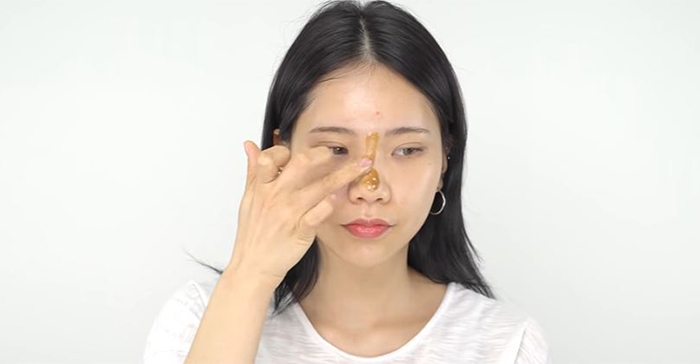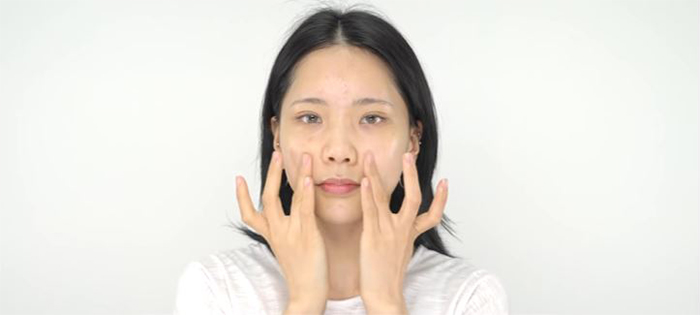Blackheads on nose are probably one of the biggest bane of our lives. They’re not just unsightly, and can be even more difficult to eliminate if you compare it to getting rid of pimples.
While blackheads are not as attention-grabbing and distressing as acne can be, they are nevertheless a source of dissatisfaction and frustration for many of us because of how visible they are to others up-close. There also doesn’t seem to be a straightforward method on how to remove blackheads, especially from your nose, where they proliferate.
Before you head out to buy all the products that scream “blackhead removal” – hold up! We’re here to break down the whole principle behind removing blackheads for you, and to show you the best ways to do it.
Learn all these tips and tricks to removing blackheads properly and make them a part of your skincare routine in 2021.
- What are blackheads?
- Exfoliate to get rid of dead skin cells
- Use non-comedogenic products
- Remove makeup and sunscreen thoroughly
- Look out for ingredients that help clear blackheads
- Use a retinoid cream nightly
- Avoid squeezing out your blackheads
- Don't forget to care for your pores
- Video tutorial on how to remove and prevent blackheads on the nose
What are blackheads?
Our skin naturally produces sebum and sheds dead cells. These are activities that are normal to skin.
The problem arise when there’s excess sebum and dead skin cells that don’t get removed. They collect in our pores, clogging or plugging them. And as they accumulate and harden, they form bumps.
These bumps are sometimes covered by a layer of skin and that’s when we get closed comedones – those bumps you often see on your chin.
When the skin that covers it opens up and the plugs are exposed, you’ll see what we commonly call “whiteheads”.
Then, air exposure cause these dead-cells-and-sebum plugs to oxidise and that’s when they turn black and become what we call “blackheads”.
These plugs are food for P.acnes, an acne-causing bacteria. As the bacteria breed and inflame our pores, that’s when we get a pimple.
Now that we’ve got you to understand the cause of blackheads, read on for tips on how to get rid of blackheads on your nose (and on other parts of your face) that we picked up from Wishtrend TV.
Exfoliate to get rid of dead skin cells

If you’ve read the above section where we talked about how clogged dead skin cells is one of the reasons why we have blackheads.
As such, one of the important steps to get rid of blackheads and to prevent them from occurring is to get rid of dead skin cells regularly.
We have mentioned this in our tutorial on how to exfoliate, but to recap: what exfoliation does is to remove the topmost layer of dead skin cells from the surface of your skin. Less dead skin cells on the surface, less dead skin cells in the pores!
To exfoliate, you can use either a physical exfoliating scrub or chemical exfoliant (usually an acid to do so.
We recommend doing this once a week. And if your blackheads appear most prominently on your nose, give more attention to the area.
Use non-comedogenic products

A clogged pore, whether it is a whitehead or a blackhead, is called a comedone (pronounced ‘koh-mee-doh-n’). Because pimples are always preceded by a clogged pore, comedones are frequently associated with acne as well.
Many skincare products available nowadays are formulated to be non-comedogenic, which means they do not contain ingredients that have been known to clog your pores, and therefore reduce your chances of getting blackheads!
For those of us with acne-prone skin, using non-comedogenic skincare and even makeup is very important to keeping not only pimples, but also blackheads at bay.
However, remember that everyone’s skin is unique – what may not clog the pores for many other people may still clog the pores of some.
That is to say that even if a product is labelled non-comedogenic, it’s not going to be a 100% assurance that it will help with your blackheads, but you stand a higher chance than with products that are not labelled non-comedogenic.
Remove makeup and sunscreen thoroughly

Use a cleansing oil to remove makeup and sunscreen thoroughly.
Taking the same principle behind preventing acne, knowing how to prevent and remove blackheads also means having to make sure your face is clean.
It’s always a good habit to remove your makeup at the earliest opportunity after you get home, instead of letting it sit on your face unnecessarily. No matter how organic and natural the ingredients in your makeup products are, they are still foreign substances that are mixing with the sebum on your face.
We like using a cleansing oil because it is the best product to remove oils from our face – and we know that oil accumulation is what cause clogging of our pores.
If it’s a bare-faced day for you, that’s great – but remember that you still applied sunscreen in the morning! Sunscreens also come in non-comedogenic formulas, but as with anything else, they should still be removed from your face before you retire for the night.
Luckily, removing sunscreens basically just means cleansing your face at night with an oil cleanser, which you should be doing anyway to prevent and remove blackheads.
Look out for ingredients that help clear blackheads
There are a few skincare ingredients that can help clear blackheads and prevent their occurrence.
These ingredients include charcoal, BHA, and salicylic acids.

Charcoal is like a magnet that draws out excess oils, dirt, and pollutants, so using products that contain it can help remove them from your pores.
Look out for charcoal products that you need to remove rather than infuse. This means that cleansers and clay masks that contain charcoal are great but it won’t make sense to use a serum that contains charcoal.

BHA is also a great ingredient to look out for because it helps to gently remove the built-up in the pores by mixing itself with oil within the pore and then removing it as you wipe it off.
Usually BHA can be found in toners or exfoliating pads.
Salicylic acid, on the other hand, helps break down pore-clogging substances such as excess sebum and dead skin cells. This can often be found in treatment gels and serums.
Use a retinoid cream nightly

Retinoid is one of the hottest buzzwords in skincare in recent years, and for a good reason. This ingredient is a derivative of Vitamin A, and they’re famous for being really effective in preventing signs of ageing like wrinkles and fine lines.
So how do you remove blackheads with retinoids, then? Retinoids are able to make your skin cells renew at a faster rate – that means newer skin cells get produced faster, and your dead skin cells will be more quickly removed.
The most effective retinoid creams are the strongest kinds that you can only get with a doctor’s prescription, and they’re usually used for treating acne. There are, however, some retinoid-infused formulas in regular skincare products.
It’s usually recommended to apply your retinoid cream at night as the ingredient can make your skin more sensitive to sun damage.’
Avoid squeezing out your blackheads

It may be tempting to squeeze out your blackheads especially when you can already see them peeking out from your pores. However, doing it incorrectly can break your skin, leaving scars, or introduce bacteria onto the area, causing inflammation. Unless you know how to do it the right way, leave extraction to the professionals instead.
Don’t forget to care for your pores

Plugs that clog pores sometimes extend the size of the pores as they become bigger, causing your pores to be stretched and, in turn, look bigger.
This is why many people who suffer from blackheads on the nose also see large pores on the nose.
After you’ve managed to find solution to get rid of blackheads on the nose, don’t forget to also care for your pores on the area.
Using products that contain witch hazel is one of the ways you can do so.
Video tutorial on how to remove and prevent blackheads on the nose
Prefer watching a video? Here’s one we love:


